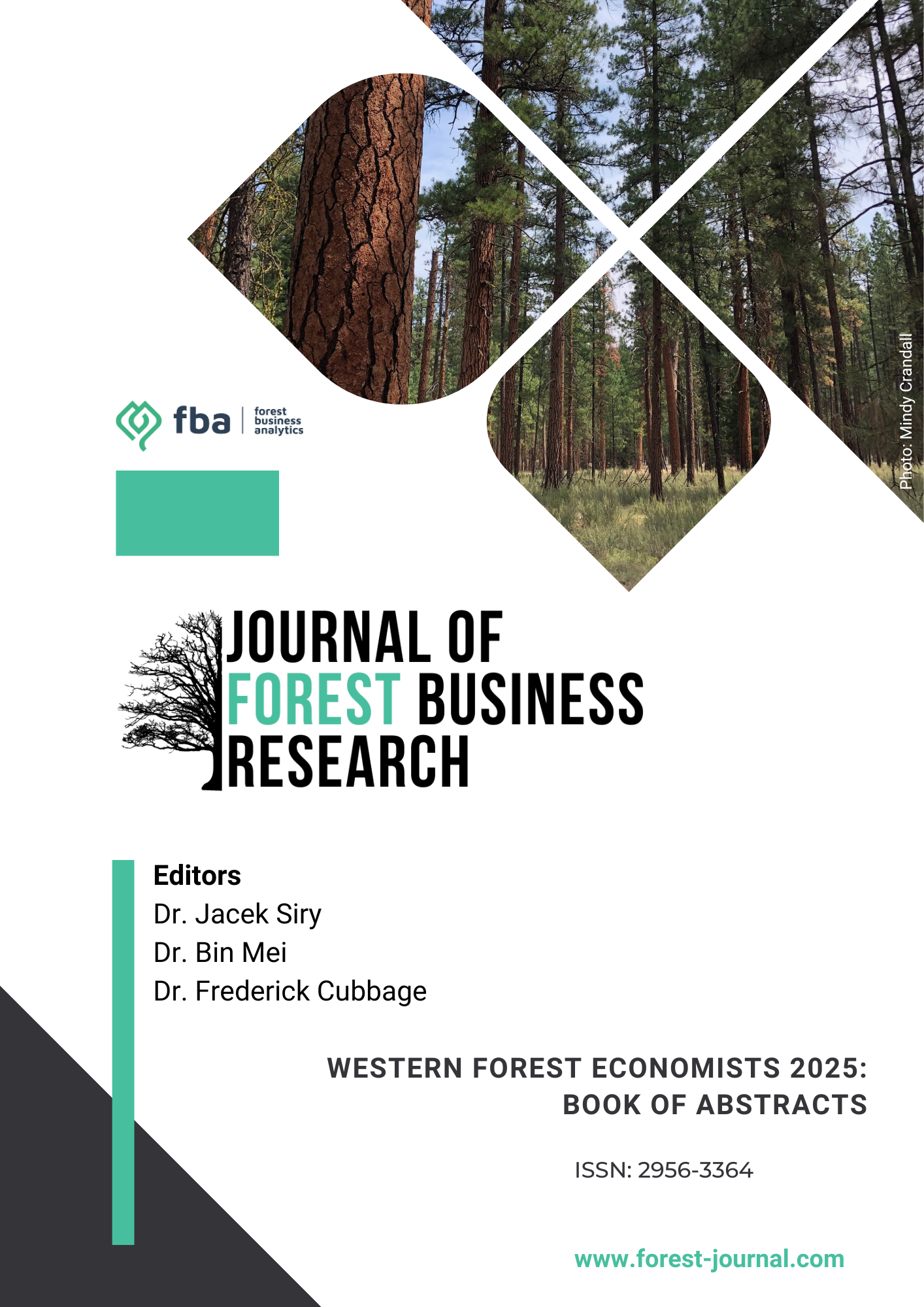Examining information sharing dynamics through network analysis in the Western hardwood manufacturing sector
Main Article Content
Keywords
hardwood manufacturing, information networks, mixed wood forests, social network analysis, value-added products
Abstract
Despite their ecological and cultural presence on the landscape, the dominance of softwood-focused policy and management in Oregon and Washington has led to the treatment of hardwoods as a byproduct of the forest industry. However, a small manufacturing sector has emerged utilising material that may otherwise be wasted as part of traditional forest harvest or arborist activities. Previous work on this study found that this specialized operating environment presents unique challenges, including uncertainty of material supply and limited specialized resources, though the companies within it have adopted strategies to navigate them. Some of these strategies include a heavy reliance on in-house capacity building supported by local networks of similar companies, technical support from manufacturers in hardwood dominant regions, differentiation by value-added manufacturing or story-based marketing, and cautious growth strategies. Further analysis of the processes used by hardwood manufacturers to acquire useable information has been undertaken using social network analysis, a method well-suited to assessing information sharing dynamics in a highly interconnected sector. Key factors identified during the qualitative analysis were used to guide the development of a survey instrument administered to the known population of hardwood manufacturers. The survey focused on information sharing relationships and their reliance on various sources of information. The resulting networks were analyzed and the results triangulated with those of the qualitative phase. A stronger understanding of information development and use in hardwood manufacturers could provide avenues to incentivize improved hardwood utilisation and stronger management practices for mixed wood forests.






